#Brahma chicken
Explore tagged Tumblr posts
Text
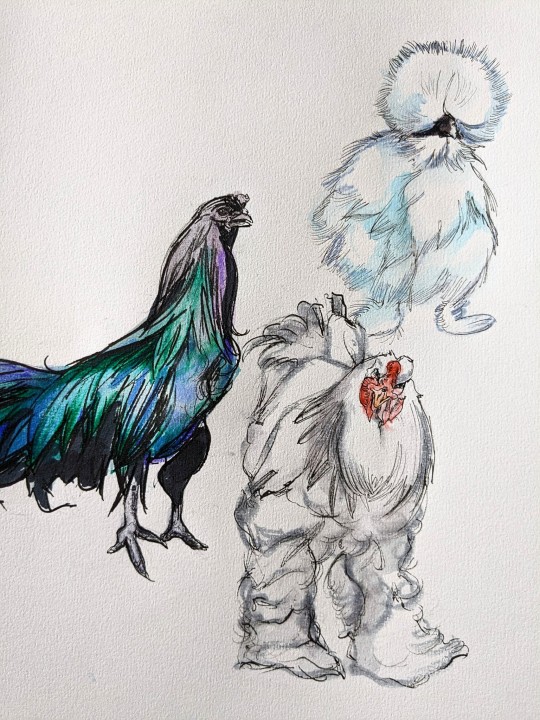
Behold
4K notes
·
View notes
Text
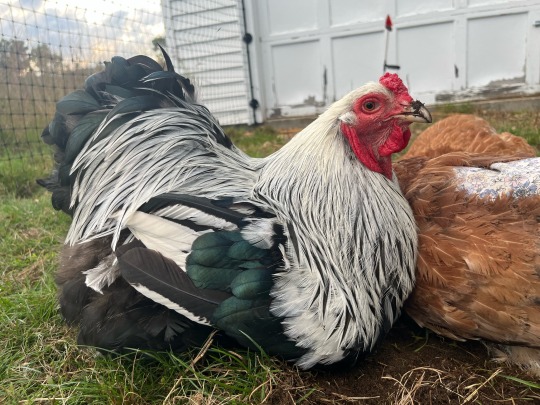
Poor Zeke’s tail molted off, now he’s just a big fluffy loaf!
#with dirt all over his face haha#the hens usually clean his beak for him when it’s dirty which is adorable#chicken#chickens#backyard chickens#chickenblr#farmcore#pet chicken#brahma chicken#Zeke the chicken
247 notes
·
View notes
Text
Domestic Chicken / Red Junglefowl (Gallus gallus)
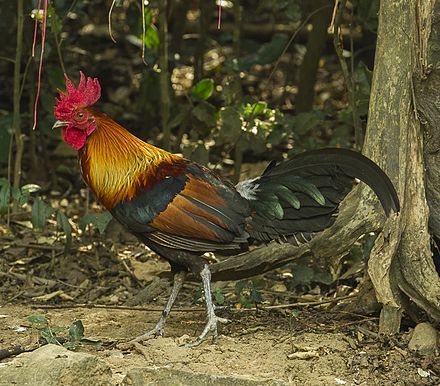
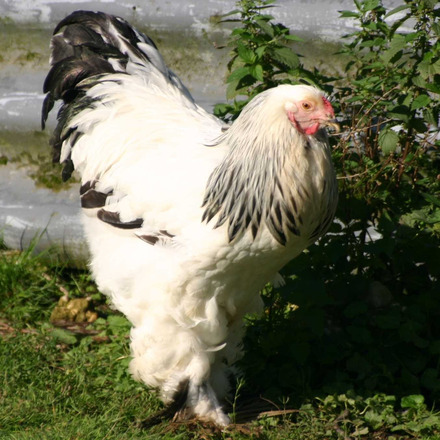
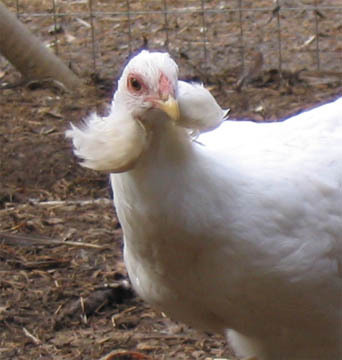
"He’s a dinosaur" (about Brahma Chicken) "My favorite chicken! We had a bunch of them when I was little and they were so smart and funny and fast and a bit territorial with smaller animals but it was so funny" (about Araucana Chicken) "Chickens descended from junglefowl, but they're pretty neat birds also."
I was really wondering when a second chicken was going to be added to the submissions, and was seriously considering having Araucana's showcased on behalf of all chickens. I owned Ameraucana chickens as a kid and they're a 'child' breed of Aracauna.
Aracauna Facts: these chickens often display either "ear muffs" or are rumpless and lay green eggs! Its not often than both muffed and rumpless birds exist, as both traits are caused by 'autosomal dominant lethal alleles'. This is one reason why Ameraucana were bred, as a way to keep the blue-green of the eggs while trying to breed out the lethal genes.
Brahma Facts: the Brahma is a powerhouse of a chicken. Between 1850-1930s, they were known as the top meat chicken in the country. They made great farmhouse birds, as the males remain tender for much longer than other chickens (up to a year, rather than 6-8 months) and the eggs were laid quite large at about 200 a year. They are also fairly cold resistant due to their feather quality and small combs, though their leg feathers can hold mud and moisture and lead to frostbite if their living quarters arent kept dry.
Red Junglefowl Facts: while this is the species that have rise to our domestic chicken, the grey junglefowl, Sri Lankan junglefowl and green junglefowl have also contributed genetic material to the gene pool. Genetic evidence suggests chickens were domesticated between 7,400-8,000 years ago!
Sources:
#in memoriam (joke)#araucana chicken#araucana#brahma chicken#brahma#red junglefowl#gallus gallus#phasianidae
28 notes
·
View notes
Text


Chicken with pants (no actually they are called Brahmas and they are the largest chicken breed)
2 notes
·
View notes
Text
Government assigned chicken sonas:
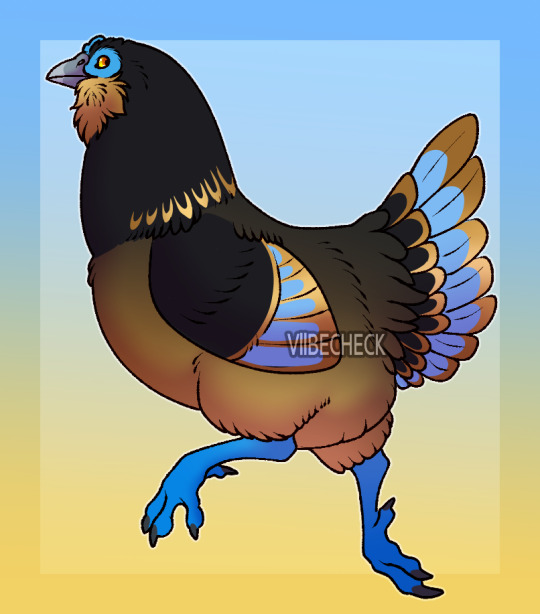



Reposting again bc I gave them pretty backgrounds bc why not lol
Wheeeeeeee
#chickenblr#chickens#artists on tumblr#artwork#digital artist#bantam chicken#easter egger#brahma chicken#ayam cemani#silkies
47 notes
·
View notes
Text
Mama Mashed Potatoes is the best hatcher on the farm. Way to go, Mashed Potatoes!
2 notes
·
View notes
Text


Baby chicks🐣
#rural#farmcore#pets#chicken#chicken breeds#backyard chicken keepers#egg hatching#farm#brahma chicken#baby chicks
3 notes
·
View notes
Text
Raven has a new army of puffballs! First time having chickens. Theyre a flock of very lively and clownish 1 week old light brahma pullets.
2 notes
·
View notes
Text






























National Farm Animals Day
Farm animals take quite the hit in terms of living conditions, diets, hormonal injections, etc., and this is why it is important to lend our voices to the cause this National Farm Animals Day on April 10. First celebrated in 2005, the day is meant to bring awareness to the overall rough conditions that farm animals are forced to live under. Capitalism has led to a gross increase in demand for livestock by commercial brands. To sell the most amount of meat and dairy products, animals are subjected to growth and antibody injections.
History of National Farm Animals Day
National Farm Animals Day was first commemorated in 2005 by Colleen Paige. Paige is a well-known celebrity pet lifestyle expert, an author, and an animal rescuer amongst her many other accolades and titles. While the day is not registered as an official day, it is still widely celebrated in the U.S. as the message it aims to convey resounds with many across the nation.
One of the main reasons the day was inaugurated was to shed light on the poor living conditions of farm animals. Firstly, because of commercialization and capitalism, livestock is produced and maintained in large populations. Often, this means cramped and extremely tight living spaces for the animals. All of this leads to poorer health conditions for them as diseases and infections can spread easily amongst the animals. Moreover, to market products to the masses, farm animals are also endlessly injected with antibodies.
World Day for Farmed Animals is also celebrated on October 2. The main purpose of both days remains the same — to protect farm animals in the long run by providing better living conditions for them. Going by simple logic, the farm animals’ products we consume will only be beneficial for us if the farm animals themselves are kept in great conditions. We can start to raise awareness about the day by spreading the word about it and donating to the right organizations.
National Farm Animals Day timeline
8000 B.C.
Cattle Being Farmed
Some of the earliest records state that cattle were being farmed for the first time during 8000 B.C. in the Middle East.
1983
World Day for Farmed Animals
The first World Day for Farmed Animals is celebrated by putting the spotlight on the plights of farm animals.
2005
Paige’s National Farm Animals Day
Colleen Paige, a famous celebrity pet lifestyle expert, announces April 10 as the day to be dedicated to farm animals and raising awareness of their poor living conditions.
2005
Paige’s National Wildlife Day
Being a philanthropist, Colleen Paige also commemorates National Wildlife Day (February 22 and September 4) to bring attention to endangered species.
National Farm Animals Day FAQs
Are there any solid laws in place for farm animals’ protection?
There are very few laws that benefit farm animals, especially on-site protection for animals in the U.S. This means that abuse often gets overlooked or ignored unless there are extremely shocking cases.
Does it cost more to keep farm animals in healthier and better conditions?
It depends, but the answer to the question is mostly, yes. However, consumer polls reveal that many people care about the welfare of farm animals and they are willing to pay more if it means that the animals are treated fairly.
What guidelines should I follow to ensure that I am buying only from trustworthy factories?
There are a few guidelines you can keep in mind while purchasing. You can do your research on brands by looking at their product labels and websites, and trying to see what farm-animal welfare practices they follow. For example, do brands ensure policies against caging/crowding and are they 100% transparent about animals’ lives under factory conditions, etc.?
National Farm Animals Day Activities
Read up on farm animals history: One of the best ways to go about this day is learning about the history of farm animals. By getting to know more about their past, you will be able to sketch a rough idea of their present and future. Animals, like any other living being, deserve respect, dignity, and the right to be heard.
Spread awareness: Talk to your friends, family, acquaintances, strangers, etc., and spread the word about the day and what it stands for. One of the best ways to do this is by using social media tools like hashtags, videos, posts, etc.
Donate to organizations: Search for farm animal organizations active and working in your locality. If none exist in your area, either start your own organization or use other ways to help by volunteering at farms or donating.
5 Facts About Animal Rights That Will Blow Your Mind
Farm animals facing the most abuse: Apart from domesticated animals like cats and dogs, farm animals face the most amount of abuse and neglect from their caretakers.
Fur from fur farms through cruelty: Most fur for fur coats and other clothing items comes from fur farms where animals are killed as young as six months old.
Women over 60 hoard animals: It has been found that women over 60 are more likely to hoard animals in small spaces.
Intentional animal cruelty leading to other crimes: It is estimated that people who intentionally inflict cruelty on animals are more likely going to be involved in other violent crimes, too.
Animal abuse common in farm factories: Undercover investigations led by state authorities have revealed that one of the highest cases of animal abuse occurs in farm factories.
Why We Love National Farm Animals Day
It’s a celebration of animal rights: Animals, be it farm ones or otherwise, deserve the right to live in good conditions like any other living being on this planet. Just because humans have been blessed with the ability to think and command, it does not mean that we should abuse other living beings for our selfish gain.
It’s a celebration of Mother Nature: Mother Nature has gifted us countless things that we benefit from every day. From beneficial plants and herbs to nutritious vitamins and minerals. It is our duty to give back and the least we can do is respect our food sources by providing them with the best living conditions possible.
It’s a celebration for a better tomorrow: The only way we can move forward and hope to have a bright future is if we take the reins today by evaluating our choices. If we do not treat our food sources the correct way, we are also harming ourselves and our future generations in the long run.
Source
#goat#Spain#north Swedish horse#sheep#Tyresta National Park#Sweden#animal#travel#original photography#flora#fauna#NationalFarmAnimalsDay#National Farm Animals Day#10 April#cow#cattle#LUGA#Schweiz#Switzerland#Kings Landing Historical Settlement#New Brunswick#Canada#turkey#Brahma chicken#rooster#Zoo Zürich#Zurich#Swiss Brown#Parda alpina#vacation
2 notes
·
View notes
Text
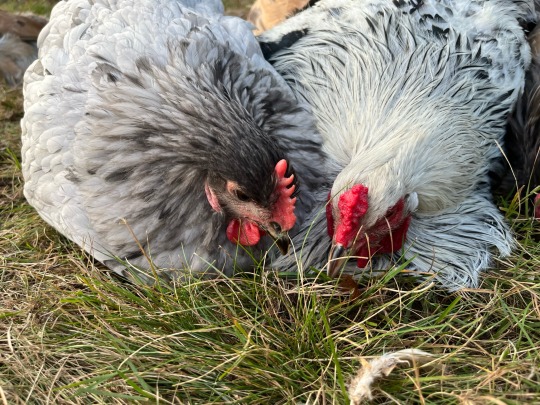
What are they whispering about? Are they just being all lovey-dovey or are they plotting something nefarious?
#the true answer is they’re zoned out and in a dustbathing trance but that’s not as funny#chicken#chickens#backyard chickens#chickenblr#farmcore#pet chicken#Jersey giant chicken#Brahma chicken#Ripley the chicken#Zeke the chicken
91 notes
·
View notes
Text

Happy Mother's Day to my favourite Mom rn.
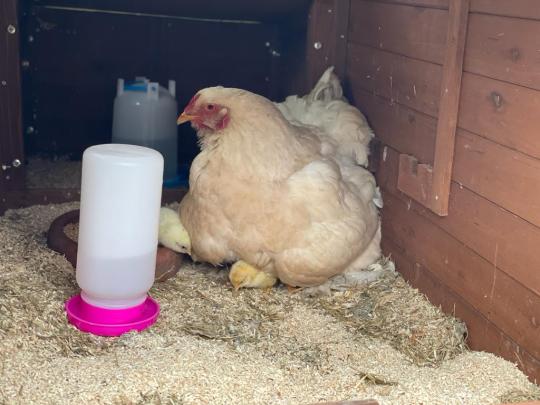
3 notes
·
View notes
Text
Yet another government assigned chicken sona for my beloved darling <3 (AlchemicPhoenix on Twitter)
They're a brahma :3

#chickenblr#chickens#artists on tumblr#artwork#digital artist#brahma chicken#brahma#chickenart#chooks
7 notes
·
View notes
Text

Return of Jax the fishboy and his 2 pet chooks
#digital art#cute#chicken#my art#art#digital#fantasy#rooster#character design#chick#hen#oc#character art#brahma chicken#old english game bantam#bird#birds
1 note
·
View note
Text

Welcome to the world, little tater tot. This is the first baby born on the farm, after being hatched by a very determined Mashed Potatoes.
11 notes
·
View notes
Text
All About Brahma Chicken; The Giant Poultry Breed
Imagine a chicken that stands tall and proud, exuding an air of magnificence. That’s the Giant Brahma. With males weighing between 5.4-8.2 kg and females ranging from 4.5-6.4 kg, these birds are truly giants among their feathered counterparts. Their sturdy, muscular build is complemented by long, well-feathered legs, a broad chest, and an upright stance. And let’s not forget their magnificent…

View On WordPress
0 notes
Text



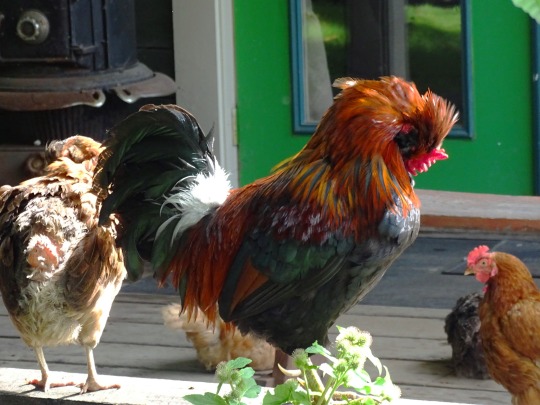


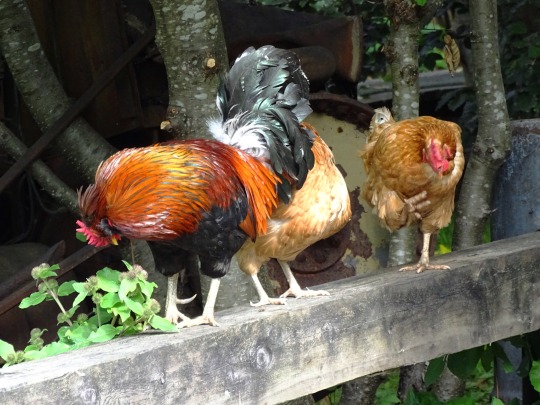
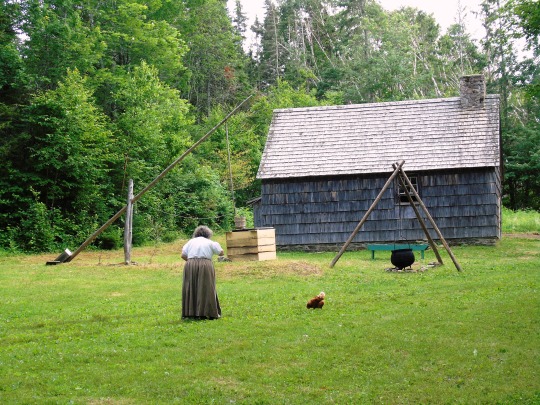

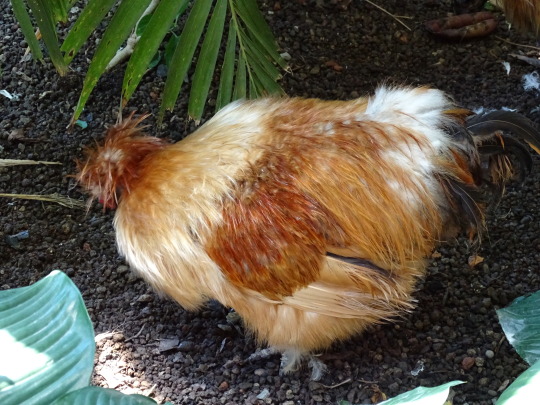
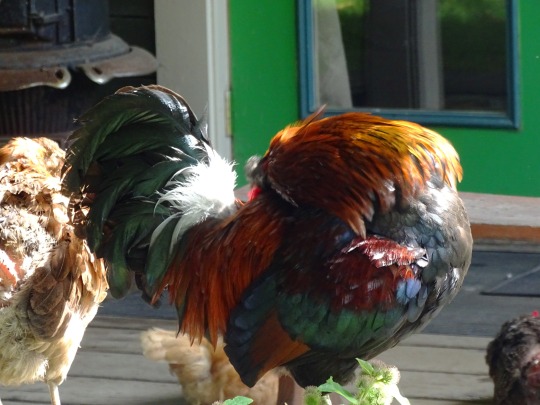
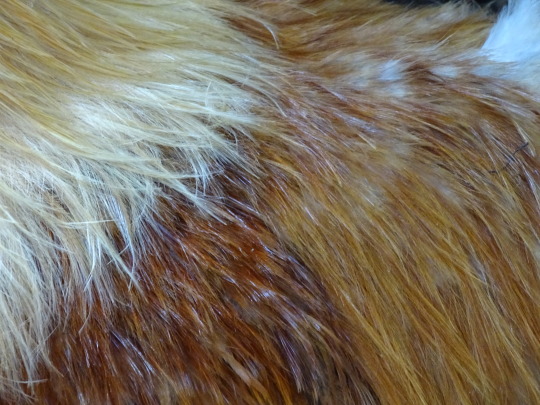


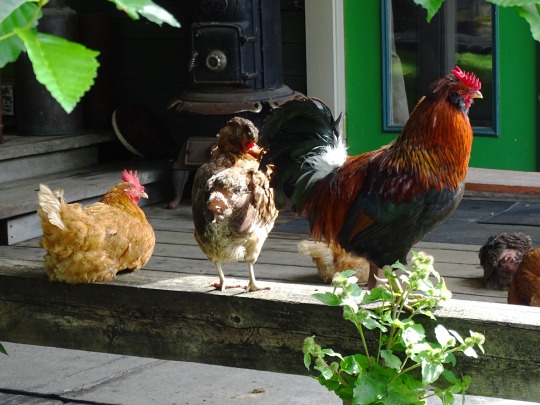
National Snuggle a Chicken Day
National Snuggle a Chicken Day is celebrated annually on January 8. Evident from the name, this holiday is a day to snuggle chickens and treat them with the same care shown to more popular pets. Interestingly, many homes do keep chickens as pets and when comfortable, chickens enjoy being petted and held by people. These feathery animals were domesticated as far back as 10,000 years ago and have been put to a variety of uses, from cockfighting to making up delicious meals. The day recognizes the abuse that chickens go through and their uniqueness.
History of National Snuggle a Chicken Day
National Snuggle A Chicken Day identifies as a nonprofit organization and the name says it all — a day to snuggle a chicken! Chickens have a long and colorful history in our world. Though they’re now commonly used for food, this wasn’t always the case. It is believed that chickens were domesticated as far back as 7,000 to 10,000 years ago. Initially, they were primarily bred for cockfighting or special ceremonies. Louisiana was the last state of the U.S. to ban cockfighting — as recently as 2008.
It wasn’t until around four B.C. — two B.C. that people began consuming chickens for food. Their eggs also became a primary source of food. Now, there are more chickens than any other bird in all parts of the world. Chickens are also pets, as they are social animals like dogs and cats. Some do enjoy being petted and picked up when they are in the company of people they feel comfortable with. Chickens have also symbolized different things in one civilization after another.
In ancient Egypt, eggs would be hung in temples to ensure a bountiful river flood. In Zoroastrianism, an ancient Persian faith, the rooster was portrayed as a spirit that crowed at dawn to signify the cosmic struggle between darkness and light. Even in Christianity, the story of Peter denying Jesus before the cock crowed led Pope Nicholas to decree that a rooster figure should be placed atop churches. This explains why many churches have cockerel-shaped weather vanes on top of them.
National Snuggle a Chicken Day timeline
7,000 — 10,000 Years Ago
The Domestication of Chickens
Chickens are domesticated in Southeast Asia and Oceania.
4 B.C. — 2 B.C.
Chickens are Bred for Consumption
People begin breeding chickens for food consumption.
9th Century
The Decree by Pope Nicholas
Pope Nicholas decrees that churches should put cockerel figures on their roofs.
National Snuggle a Chicken Day FAQs
What does it mean when a chicken follows you?
Chickens can follow you when they are hungry, especially if you are their caretaker.
What Are chickens afraid of?
Chickens are afraid of large predators like owls and hawks.
Where do chickens like to be petted?
On the head, back, neck, or chest.
National Snuggle a Chicken Day Activities
Snuggle a chicken: It’s National Snuggle a Chicken Day! Celebrate by snuggling a feathery chicken.
Buy a chicken: You can also buy and keep a chicken as a pet. They make for peaceful and fairly low-maintenance pets. Plus, they could also supply you with eggs.
Spread the word! A lot of people probably don’t know we’re celebrating this holiday. Spread the word by telling a friend or posting on social media.
5 Fascinating Facts About Chickens
They can spot differencesChickens can distinguish between more than 100 faces of their species.
They have social structuresChickens know who’s boss by forming complex social structures known as ‘pecking orders’ where every chicken knows his or her place on the social ladder.
They have complete sightChickens have a full-color vision.
They sleep like humansThey experience rapid eye movement in sleep, which means they dream just like any human.
There are more chickens than humansThere are currently over 20 billion chickens in the world.
Why We Love National Snuggle a Chicken Day
Chickens are social: Contrary to popular opinion, chickens are social animals. Some enjoy being petted and picked up, like other popular pets.
Chickens are a food source: Chickens are a healthy source of protein when used as food. Both their eggs and meat are healthy food sources.
This holiday opposes animal cruelty: People are often prone to mistreat the animals they own. This holiday is a reminder to treat animals, including chickens, with more care and kindness.
Source
#Brahma chicken#Key West chickens#Zoo Zürich#Stewart#Kings Landing Historical Settlement#Switzerland#Canada#USA#Silkie#Zurich#Schweiz#travel#original photography#vacation#tourist attraction#landmark#day trip#flora#fauna#architecture#cabin#National Snuggle a Chicken Day#NationalSnuggleaChickenDay#8 January#bird#animal#rooster#feather
3 notes
·
View notes